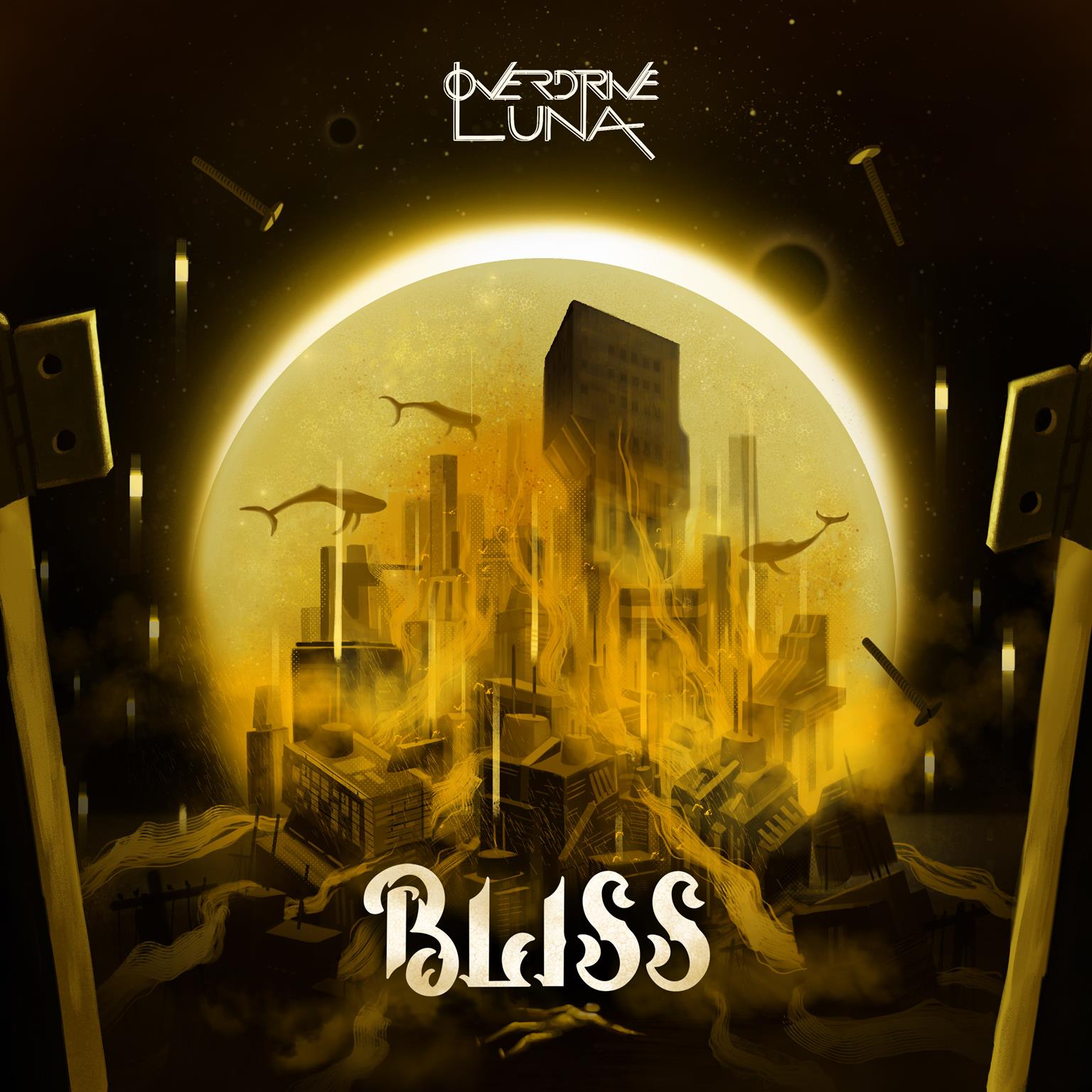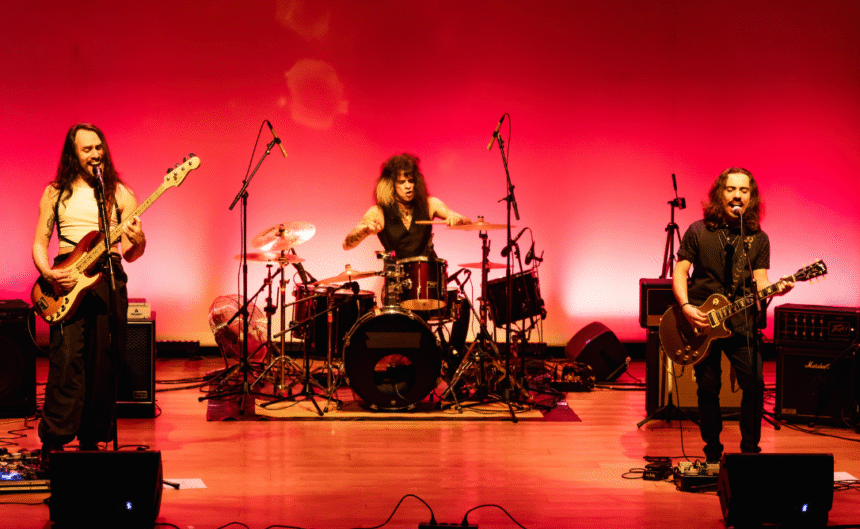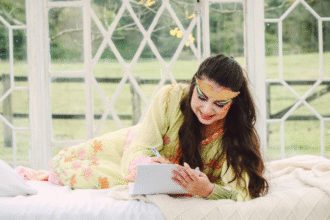Jundiaí-based power trio Overdrive Luna presents its highly anticipated debut album, “BLISS,” available October 31st on all digital platforms via Marã Música. Combining grunge, cosmic horror, and a dreamlike aesthetic, the album offers a dark and introspective journey through human emotions, divided into three acts that explore the boundaries between pleasure and despair. Conceptually and visually striking, the project cements the band as one of the new creative forces in Brazilian alternative rock—and paves the way for its future film adaptation.
“BLISS” is described as a surrealist horror story divided into three acts. What kind of “monsters”—internal or external—did you face while creating this album?
It may be a cliché to say this, but the scariest monsters are the ones we carry within us, the ones that know us completely. They often whisper in our ears and haunt our dreams. Art, despite being a chaotic switch that’s eternally on, is, above all, therapeutic. Creating is leaning into yourself and emerging on the other side.
The blend of grunge and cosmic horror is rare in Brazilian music. How did this connection between heavy music and quasi-philosophical elements of fear and existence emerge?
The structure of our compositions is approached in a similar way to a script in a story, and in this script we seek the most visceral emotion we know: fear.
As a nefarious writer from the last century said: “ The oldest and strongest emotion of humanity is fear, and the oldest and strongest of all fears is the fear of the unknown .”
So, there’s nothing better than exploring our own fears to add more color to such an intense, heavy and surprising instrumental.
Our music has always walked alongside themes such as mystery and horror , but this specific album we delved even deeper into the genre, using references such as The King in Yellow (Robert W. Chambers) , The Music of Erich Zann (HP Lovecraft) , Silent Hill (Team Silent) and Darkwood (Acid Wizard Studio) .
The album proposes that each track be a standalone story, open to interpretation. Which song best reflects your current emotional state?
I hope none. Our songs contain sensitive themes, feelings that everyone has experienced at one time or another and will surely relate to. Each song serves as a dreamlike account of what we experienced during difficult times and raises questions like:
“What if we bring our end forward?”
“Does the end really matter?”
“What’s on the other side?”
I truly hope it’s calmer than our waking world. In moments of despair, these questions often emerge from our deepest abysses, but fortunately, art serves as a tool, and our minds are more than healthy these days.
The cover art conveys an ambiguous feeling between finality and lightness. How does this image relate to the concept of “BLISS,” which speaks to relief in the face of the end?
Despite the ending, the ending of our character’s story isn’t entirely tragic.
We don’t know exactly where she ended up, but she seems relieved in this dream world.
She floats over the lake and watches whales fly over huge buildings, something that unfortunately is only possible in our deepest dreams, but she managed to have the privilege of this vision.

You mention that the album started as an acoustic EP and grew into something much bigger. At what point did you realize you were creating an entire universe—not just an album?
Our songs always start with acoustic compositions, but this was a time when we were without a drummer; there was no other option. The band was just Zé Gui Marçura & Bruno Picolo. Thus began this so-called “acoustic” EP.
New ideas, two guitars, and a dream. A dream that soon grew to much greater proportions than the initial spark. We truly enjoyed the artistic process, the act of creating, of immersing ourselves in art itself.
This album allowed us to go far beyond music. It was through BLISS that we created the short film series “FOUND TAPES” (available on our channel), which served to accompany and announce the release of each chapter of this album. The simple act of making it taught us a lot about lighting, scriptwriting, and storyboarding.
This dream would not be possible without the artists who worked alongside us, each of whom had complete creative freedom, always putting a little of themselves into our art.
“Sleeper” concludes the project with a narrative about drowning and falling asleep, an intense and symbolic image. What does this metaphor represent to you?
The text in “Sleeper” is by artist Juliane Hooper, and in her words: “Besides the obvious and depressing part about sinking into the darkness and giving up, the text also talks about resting and stopping trying to fight unnecessary things, the wrong things. Allowing the good things, embracing and accepting our own essence and letting go of the weight of what doesn’t matter to us, allowing the light things.”
In the positive part of this poem, Juliane also expressed a bit of her feelings for Bruno, the band’s bassist. “Sleeper” ends with the line “I floated ,” something so impactful it could easily be the song’s title.
The Halloween release connects the album to the horror tradition. How do you see the relationship between fear and beauty in art?
Fear is perhaps one of the most intense and genuine emotions a human being can experience. There’s something beautiful in the purity of this feeling; it’s raw and unpolished. Fear surprises with every uncertain step. As we mentioned before, our compositions function as scripts, and we greatly value the dynamic between mystery and surprise in these short scripts.
The film adaptation of “BLISS” promises to expand this universe. What can we expect from this next phase—and how do you envision translating the energy of sound into images?
Producing a film gives us some freedom, allowing us to open some doors (or windows) that were previously closed. The initial idea was the classic “let’s make a music video for each song,” but we always choose the more fun (and laborious) path. A film adaptation of BLISS seems like the right answer.
What we can say at this point is that the film won’t just be a collection of clips. We’ll cover all the album’s tracks, but there are scenes without music, which are more than necessary to tell this story. An entire film without dialogue, because we believe the images and music speak for themselves, which also allows us to reframe certain things.
We can share some of the works that have influenced us: The VVitch (Robert Eggers), Suspiria (Luca Guadagino, 2018), Alan Wake (Remedy Entertainment), and of course, Twin Peaks (David Lynch, Mark Frost). It’s scheduled for release in late 2026. We’ll see you next Halloween, and we hope our music is in your deepest dreams by then.
Follow Overdrive Luna on Instagram





